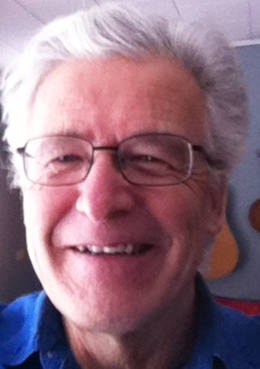Living as he does on Enderby-Grindrod Road, newly elected Regional District of North Okanagan Area F director Denis Delisle often hears the sirens of ambulances and first responders on Highway 97 A.
Delisle was pleased with Tuesday’s announcement that Highway 97A between Grindrod and Sicamous will have its speed limit reduced from 90 kilometres per hour to 80 km/h. The roadway is one of 15 sections of B.C. highways – the only one in the North Okanagan – having speed limits lowered to keep people safer and reduce the chance of speed-related conditions.
RELATED: Speed limits being reduced on 15 B.C. highways
“It’s a really good idea,” said Delisle, who said he hears sirens frequently, but especially in summer. “There are a lot of accidents on that stretch. Speed is definitely a factor. It’s a small, narrow road in spots, very crowded.”
The Ministry of Transportation and Infrastructure reviewed three years’ worth of data on 33 segments and 1,300 kilometres of highway, where speed limits were increased as part of the 2014 Rural Safety and Speed Review.
As a result, 15 sections of highway, totalling 570 kilometres, will have speed limits rolled back by 10 km/h. Along with the two corridors that were lowered in 2016, this represents 660 kilometres of B.C. highways where speed limits are being rolled back. The remaining routes did not show higher accident rates and the speed limits will remain the same, including the Coquihalla where variable speed limits are in operation.
“It’s fine to have speed reduction, but enforcement needs to follow up,” said Delisle. “There needs to be police on that road.”
Said Cpl. Mike Halskov, media relations officer for B.C. RCMP traffic services: “We will continue to do what we have always done, enforce the posted speed limits, no matter what it is. So nothing really changes for the officers on the highways. I would urge motorists to obey speed limit no matter where they are travelling. Where collisions are concerned, lower speeds reduce the risk of being seriously injured or killed.”
Provincial health officer Dr. Bonnie Henry said speeding has been one of the top three factors contributing to car crashes, especially in rural and remote areas of B.C.
“Research has shown that reducing speed lowers the number of crashes and severity of injuries, so I am very supportive of the speed limit reductions announced,” said Henry. “I look forward to the safety measures that will be implemented on B.C. roads, and will continue to work with the Road Safety Strategy Steering Committee to advocate for initiatives that will help keep all road users in B.C. healthy and safe.”
Ministry staff considered all contributing factors in serious highway collisions. This includes speed, distracted driving, wildlife, changing weather and people driving too fast for conditions.
“The BC Trucking Association is very supportive of the government’s decision to roll back speed limits on selected highway segments,” said Dave Earle, president and CEO of the association. “The stopping distance for heavy commercial vehicles increases at higher speeds, as does the force of impact, so safety measures that help reduce these risks for both commercial and passenger vehicle drivers are important. As well as safety, lower speeds mean greater fuel efficiency and fewer greenhouse gas emissions, a welcome side effect worth noting.”
Based on the recently completed review of three years of data, the speed limits are being rolled back by 10 km/h on the following 15 highway corridors that have seen any increase in collisions:
* Highway 1: Cowichan Bay to Nanaimo - 90 km/h to 80 km/h;
* Highway 1: Whatcom Road to Hope - 110 km/h to 100 km/h;
* Highway 1: Boston Bar to Jackass Mountain - 100 km/h to 90 km/h;
* Highway 1: Tobiano to Savona - 100 km/h to 90 km/h;
* Highway 1: Chase to Sorrento - 100 km/h to 90 km/h;
* Highway 3: Sunday Summit to Princeton - 90 km/h to 80 km/h;
* Highway 7: Agassiz to Hope - 100 km/h to 90 km/h;
* Highway 19: Parksville to Campbell River - 120 km/h to 110 km/h;
* Highway 19: Bloedel to Sayward - 100 km/h to 90 km/h;
* Highway 97A: Grindrod to Sicamous - 90 km/h to 80 km/h;
* Highway 97C: Merritt to Aspen Grove - 110 km/h to 100 km/h;
* Highway 97C: Aspen Grove to Peachland - 120 km/h to 110 km/h;
* Highway 99: Horseshoe Bay to Squamish - 90 km/h to 80 km/h;
* Highway 99: Squamish to Whistler - 100 km/h to 90 km/h;
* Highway 99: Whistler to Pemberton - 90 km/h to 80 km/h;
The following 16 corridors showed no reduction in safety, and speed limits will remain the same:
* Highway 1: Salmon Arm to Revelstoke - 100 km/h;
* Highway 1: Revelstoke to Golden - 100 km/h;
* Highway 3: Hope to Coquihalla - 110 km/h;
* Highway 3: Sunshine Valley to Manning Park East Boundary - 100 km/h;
* Highway 5: Hope to Kamloops - 120 km/h;
* Highway 5: Heffley to Little Fort - 100 km/h;
* Highway 6: New Denver to Hills - 90 km/h;
* Highway 6: Summit Lake to Nakusp - 100 km/h;
* Highway 19: Campbell River to Bloedel - 90 km/h;
* Highway 19: Port McNeill to Port Hardy - 100 km/h;
* Highway 33: McCulloch Road to Black Mountain - 100 km/h;
* Highway 33: Rock Creek to Westbridge - 100 km/h;
* Highway 97: Cache Creek to 100 Mile House - 110 km/h;
* Highway 97: Swan Lake to Monte Creek - 90 km/h;
* Highway 97A: Armstrong to Enderby - 100 km/h;
* Highway 99: Lillooet to Cache Creek - 100 km/h.
roger@vernonmorningstar.com
Like us on Facebook and follow us on Twitter.
